Biodiversity Conservation by Local Communities of Kutch
Pankaj N. Joshi1 and Hiren B. Soni2
1Executive Director, Sahjeevan,
175-Jalaram Society, Vijay Nagar, Hospital Road,
Bhuj (Kutch) – 370001, Gujarat, India
2Department of Environmental Science & Technology (EST),
Institute of Science & Technology for Advanced Studies & Research (ISTAR),
Vallabh Vidyanagar – 388120, Dist. Anand, Gujarat, India
Corresponding Author: drhirenbsoni@gmail.com
While waiting for a binocular from a local lad of Kharadiya Village near Chari Dhand in Nakhtrana Taluka of Kutch District, we saw several posters and colorful hand-drawings and inscriptions on the walls near a local bus stop depicting vultures. Noticing our interest, a small group of school children murmured ‘aa to Gidh che Gidh’ (This is a Vulture). On gentle questioning, the children excitedly discussed with us about this endangered species. They explained to us in a very lucid manner the key reasons for vultures vanishing from these potential landscapes.
We were surprised to see that the locals (especially young generation) were well aware about the value of this large scavenger species (vulture), which used to be once found in large congregations in Kutch (Dr. Hiren B. Soni, Status of Vultures in Kachchh, Vulture News, Africa, 2007, Pers. Comm.). They told us about the steps needed to conserve the depleting population of vultures in arid and semi-arid landscapes of Kutch. They also highlighted and summarized the possible and probable ways for better conservation of the prevailing population and revival of vanishing roosting sites of this species. Hearing them talk, we were surprised as well as very excited.
With the ringing of the school bell the boys left. However, one lanky boy Abdul approached us, and inquisitively asked us about the purpose of our visit to this locality. After introducing ourselves we asked him a series of questions about the posters like who prepared and pasted the posters on the walls, how the school children were aware of such detailed information about vulture species and its surroundings, the conservation efforts, threats, their moral and ethnic duties to protect this avian species and who made them aware about all these details about vultures. Listening to all these questions, Abdul took us to a nearby village, to meet some elder members, who were sitting on a charpoy (traditional woven bed) enjoying the morning sunlight.
After Abdul explained to them the purpose of our arrival in their vernacular language (Kutchi), they said to us in Hindi ‘Dekhiye hum log do saal se prakruti vaividhya ko bachane ke liye kaam kar rahe he (For the last two years, we are putting our best efforts to conserve nature)’. They also focused on the facts about the conservation efforts implemented by the villagers for the last two years for the survival of the vultures.
We were still eager to know more about the perception of the villagers about their biodiversity, conservation and management agenda behind the concerns of this endangered species. On asking the same to Abdul, he told us about the Biological Diversity Act (BDA), Biodiversity Management Committee (BMC) and PBR (People’s Biodiversity Register) processes started in the local communities with the help of a Bhuj-based NGO.
We were over-whelmed to see such information from a boy, living in a small village with limited network of cell phones and poor road network. Listening to him we forgot that we had to actually go to the conservation reserve for sighting the migratory birds. We continued to silently observe Abdul, as he surrounded by small children shared his knowledge ’hum logone milke People’s Biodiversity Register (PBR) banaya he, aur usme sabko laga ki hamare Gidh vaapis aa sakte he, agar sab log milke kaam karenge to (We have prepared a PBR, and if we all work together, vultures will surely return)’.
These people also had formed the BMC in their village Panchayat involving active and subject experts as members. Among them were, Khimaji Kaka, who was well versed about conserving and managing adjacent forest areas and its abiding wildlife. Rafik Usman, had expertise on conserving native seeds of several crops. Salim Mama, came from a family who for generations practiced traditional healing and use of medicinal plants to cure incorrigible livestock diseases. Madhu Ba, knew almost all of the plant species which existed in the close vicinity of her village. Other members of the committee like Ramila Ba, Varsha Masi and Rana Kaka were also well-versed personalities of the village, who had an in-depth knowledge about growing environmental issues of their province. Abdul told us about the Biological Diversity Act and the crucial role of BMC to address any illegal cutting, thatching or lopping of trees, hunting and poaching of domestic and wild animals, unwanted and harmful invasion of Gando Baval (Prosopis juliflora) in grassland and adjoining marshy habitats.
While enjoying tea with the villagers, relaxed on the Charpoy, Salim Mama explained about their participatory planning on development of action plan to conserve the prevailing biodiversity. This included wildlife, plants, native seeds, native breeds of plant and animal species, habitat improvement and purposeful removal of Gando Baval from the landscapes. Meantime, Abdul brought many other posters and brochures depicting different species of plants and animals from BMC Panchayat office. We realized the importance of planning of local awareness activities involving BMC at village level. Rana Kaka shared their painstaking efforts of involving school teachers and students in such programs and arrangement of nature education camps with help of the forest department.
Ramila Ba and Varsha Masi shared their views on illegal hunting and poaching of animals by local tribes. They also shared the information regarding initiatives and actions taken by BMC to conserve important wildlife and birds including migratory species, along with endemic reptilian species viz. Spiny-tailed Lizard (Sandho).
They said ‘Ye log abhi deshi vriksh ke beej ekattha kar ke BMC ko de rahe he, aur BMC uska Gando Baval jahase nikala he vaha plantation karte he (Local people collect indigenous seeds of native tree species to be given to BMC, and it will carry out plantation program of native trees in the degraded areas where the invasive plant Prosopis juliflora have been uprooted)’. They all were very firm in preventing illegal hunting of the native species of plants and animals. Lastly, all elders shared their views on traditional ban on hunting and cutting of native trees in their landscape. We all were surprised to see that without being informed, educated and trained, they all were trying their best to protect the native wildlife and their landscapes. We realized the importance of knowledge and information about species and their conservation among elders and teachers.
We realized that these people were doing the real conservation work on the field, while we, the so-called ‘Scientists’ or ‘Researchers’, were only engaged in paper work in the form of reports, documents, articles, etc. The only thing achieved by that was to get a few publications to our credit. The question to ask ourselves was, in reality had we actually conserved any species during our entire job tenure? After listening to these people, we came to know their voices and the challenges faced by them. They had no expectations of getting awards or rewards or any recognition.
We, the so-called literate people with degrees, experience and so many resources at our behest should salute these youth and elders for their incessant and perspiring efforts to conserve their landscapes and its biodiversity.
While walking around the village, Rana Kaka shared his childhood experience with the forestland, grazing pastures and the marshlands surroundings the village. He recollected how in the olden days they used to start their journey to graze the cattle from 6 am in the morning along with a packed lunch, and return home only after dusk. Several times, they sighted wild species like Jackals, Foxes, Hyenas, Wolves, Blue Bulls, Wild Boars and Jungle Cats etc. We asked them if they didn’t feel scared of the wild animals; Rana Kaka smiled with wrinkled fingers on his long white mustache, and said “ye hamara bhi ghar he aur unka bhi; hume malum he agar woh nahi rahe to hambhi khatam ho jayenge aur unko bhi shayad aisa hi lag raha hoga (This is our home as well theirs; we know that without wildlife, our survival will be in danger and vice-versa)’. This was what was taught to us as the eternal coexistence of humans and animals on the same terra firma. These people have learned all these things from their experiences by being in and with nature.
Rana Kaka told us that sometimes, along with his family members they used to go to a forest patch adjacent to the village to stay for a couple of days. At night in the jungle, in the bright moonlight, they used to sleep under the trees on the grass, like a ‘Kid in Mother’s Lap’.
He said these days; wolves were rarely seen in their areas due to the poisoning of the prey (kill) by the villagers. This ultimately resulted into gradual increase in the population of the Blue Bull and Wild Boars, as there were hardly any predators left to hunt their young ones.
As we reached sim (grazing pastures), we saw that large numbers of Gando Baval (plants) were removed from there, and a signboard was displayed which said ‘Dumping Site for Vultures’. As explained by Khimaji Kaka earlier, after several consultations with the local people, they had decided to restore this site for rehabilitation, roosting and feeding of vultures. Here they had started to dump their dead livestock, cross-checked for diclofenac-free carcasses. The site was installed with camera traps, and a group of researchers also helped them to monitor it. Still, the vultures had not started to visit this site.
The Dhinodhar Forest Area, around two decades earlier was a favourite place for vultures for their night roosting. Recently however, very few vultures visited this site. Without losing hope, Khimaji Kaka and Salim Mama were still briefing the possibilities and probabilities to restore the wild population of vultures again. They were conducting awareness programs for researchers, pastoral communities, farmers, Government Departments like Animal Husbandry and Forest Divisions, etc. A fortnight earlier, they had organized a local level seminar on ‘Rejuvenation and Conservation of Vultures’ in school, and invited the stakeholders to help them for preparing a roadmap to restore and revive this dwindling species. We all were moved seeing the actions taken by them and found it hard to come up with words to appreciate their selfless efforts with a momentous confidence and courage.
While returning, we saw few school children accompanied by their teachers going on a wild trail after school hours. The trail helped them to gain knowledge about the tracks and signs of wildlife, like ‘V’ shaped tracks of Chinkara (Indian Gazelle), scratches of hedgehogs in under-bush, spines of porcupines, pellets of hares, tracks of cats and jackals, etc. This was really an enjoyable way for the children to know about existing wildlife species around them and learning to co-exist.
On approaching a small wetland, Salim Mama and a few other shepherds, who normally came there with their cattle, told us about the presence of Marsh Crocodiles. These crocodiles are locally known as ‘Chhaniyo Mugger’ means Dung-eating Crocodile. As we were new to the place, we were scared to go closer to the waters but, Abdul told us confidently that ‘abhi mugger ka aaram karne ka vakt he, woh firse shaamko active hoga, aap log daro mat (It’s resting time for the Crocodiles now, they will only be active during the evening hours, so no need to fear). We were amazed to see how he knew about this activity and diurnal rhythms of Crocodile. After looking at our amazed looks, he explained about the routine behavior of this species during morning and evening hours. He said he used to document all these activities from a safe distance. We were astonished to know this wonderful practices and keen observations of local villagers about diurnal, crepuscular, and nocturnal habits of wild animals.
As the day progressed and the sun shone overhead, the scorching heat grew and so we gradually moved on. After reaching a village, we halted for some time and were amazed to see that the women of the village had already arranged a traditional thali (Lunch) for us. It consisted of bajari roti, sabji, garlic chatni, ghee and gud. We enjoyed the delicious food with immense gratitude. We realized that this thali was far better than the food served in any of the 3-star hotels in the city. Ramila Ba and Varsha Masi while insisting us to have more rotis, shared with us the fact that how local bajra (millets) has disappeared from the landscape. They said Bajra was actually a native grain crop and it bears a drought resistant capacity and a sweet taste. Presently there is a grave scarcity to procure its seeds for sowing purpose. However, with piloting efforts of BMC, a few farmers were fortunate to have some kilograms of seeds this year, which they already had sown in their fields. Rana Kaka additionally informed us that ’maine padha tha ki agar bajri ke deshi beej ko vaapis leke ayenge to Ghorad (Great Indian Bustard) panchhi bhi bach jayega (I read somewhere that if more farmers cultivated millet crop, then there was a chance to save the Great Indian Bustard)’. Appreciably, BMCs of Abdasa Taluka, Western Kutch, have taken painstaking efforts to survive, sustain, and save the natural grassland habitats for this flagship species associated with other important flora and fauna. He also stated that a few months earlier, few members of different BMCs participated in the regional workshop, organized by some NGO, and shared their experiences on biodiversity and landscape conservation.
Jitubhai from Lathedi village stressed upon the conservation of rediscovered small plant species called Sudiyo (Olax nana) by his village BMC. He said, with an appreciable involvement of forest department and faculties from different universities they had produced more saplings using tissue culture technique. They developed some standard and legal norms to avoid grazing practices of their cattle during flowering and fruiting seasons. They also tried to create artificial hedges around the plants and created awareness among local people and other concerned pastoral families to protect this small, endemic, newly discovered plant. Jitubhai also added with confidence ‘hamare sabhi bachcho ko yeh vanaspati ke bare me malum he, aur sabhi log Sudiyo vanaspati ko bachane ke liye pura prayas kar rahe he’ (All our children know about this medicinal plant and we all are trying hard to save this plant species). Same information was shared by Rana Kaka, Satayabhai and Shanti Bapa from Nani Virani and Sayra villages, respectively.
They also had initiated small-scale conservation efforts at local level for a small rare bird species called Kabari Ram Chakli (White-naped Tit). To protect this species, they removed Gando Baval at mass scale, and thus revived the natural habitat for survival of this rare bird. Several nest boxes were installed with the help of a technical team and other researchers of the area. With great enthusiasm, almost all the villages have established IEC (Information, Education, and Communication) materials in local language on target species for their conservation and management, assisted by panchayats. Most of the BMCs and Village Panchayats have documented some “Do’s and Don’ts” for conservation of biodiversity and potential habitats locally. They have started employing small-scale efforts to form several resolutions on thrust areas, to be shared with Government Departments and other replica agencies to implement their action plans in near future.
Presently, with the help of villagers, around 15-20 BMCs in Kutch District of Gujarat have started working on similar approaches to conserve the threatened biodiversity including crops, plants, amphibians, reptiles, birds and mammals in their supportive ecosystems.
At the end of the day, after enjoying the delightful company of the villagers and learning about the grassroot level work done by them (we can call them as ‘Conservationists in a true sense’). We realized the importance of timely awareness of biodiversity among villagers, and need-based actions taken by them for better conservation and management of local biodiversity of Kutch, Gujarat, India.
- Biodiversity Conservation by Local Communities of Kutch, Gujarat, India - 22 March,2019
- Wetlands – An Eternal Abode for Avifauna - 20 April,2017
- In Search Of Stoliczka’s Bushchat - 28 March,2016

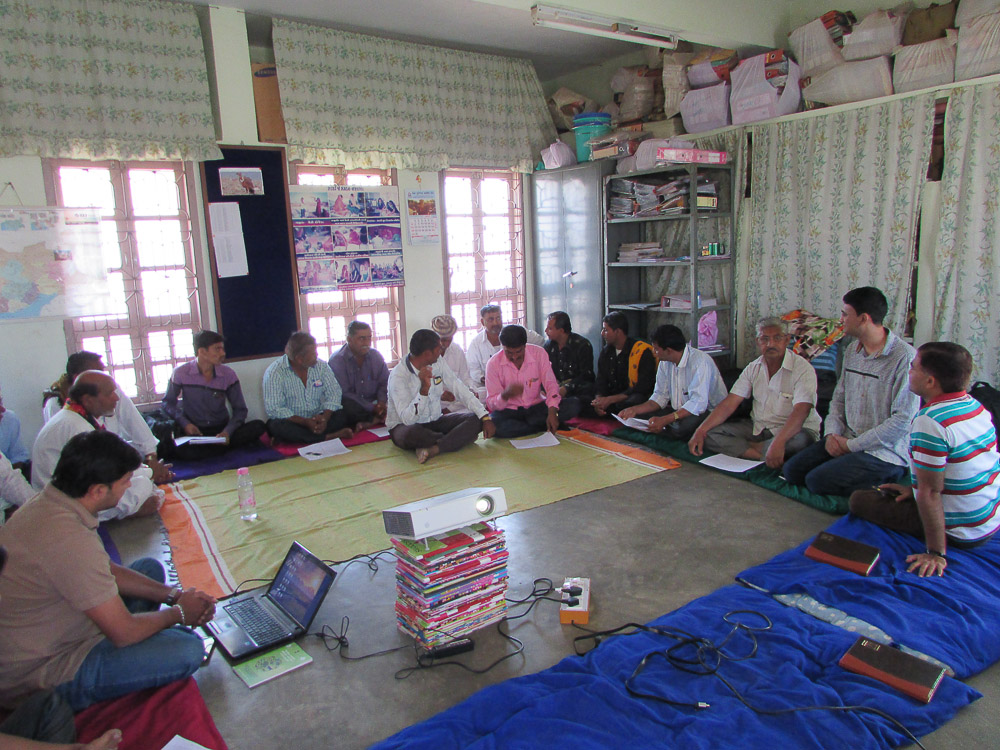
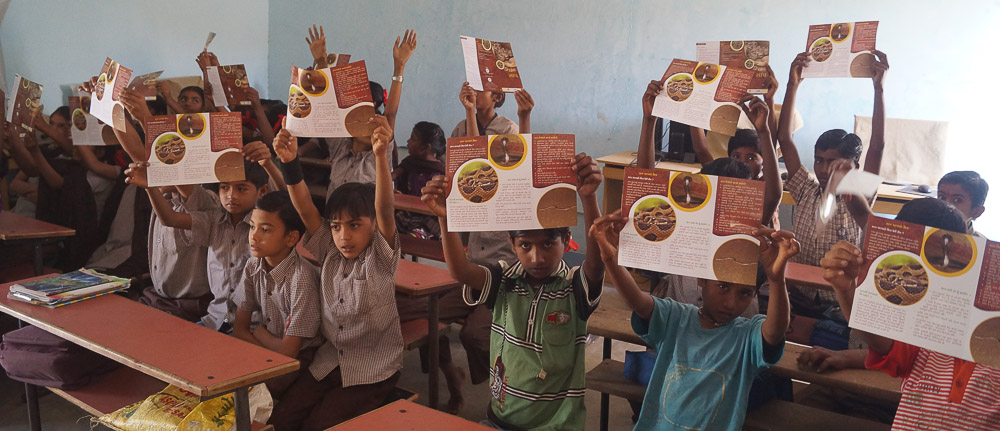
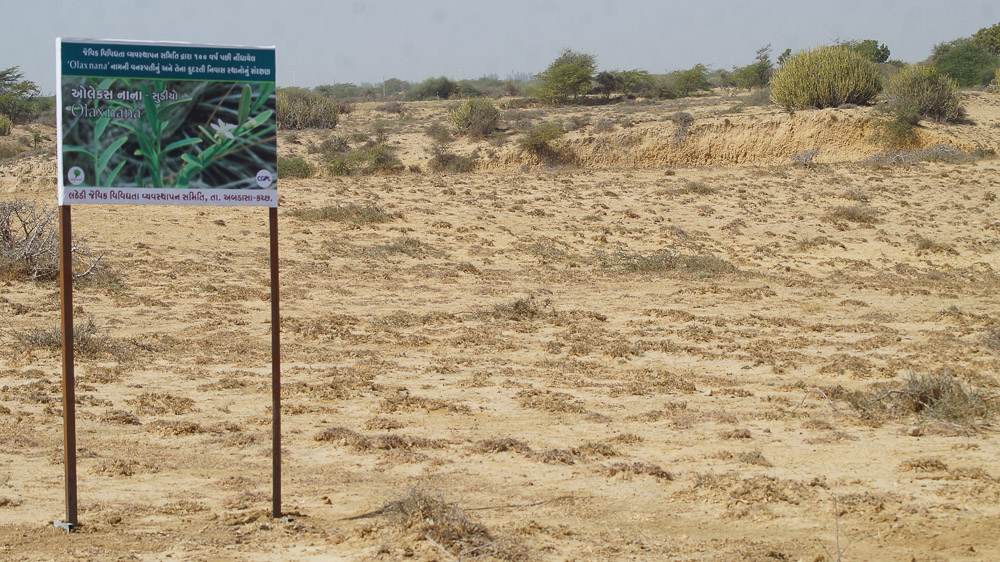



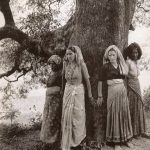
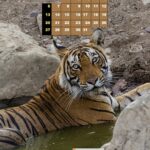

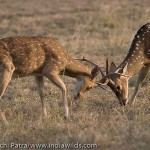
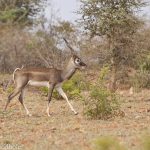



Hey, First of all, thank you so much for sharing this Amazing information about Kutch Gujarat is important and It’s really helpful for me Once again Thank You very much:)